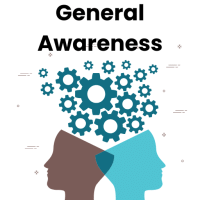SSC CGL Exam > SSC CGL Questions > Identify the sentence with an error in the si...
Start Learning for Free
Identify the sentence with an error in the simple present tense.
- a)She writes emails every day.
- b)He doesn't speaks English.
- c)It rains a lot in spring.
- d)Dogs bark at strangers.
Correct answer is option 'B'. Can you explain this answer?
Verified Answer
Identify the sentence with an error in the simple present tense.a)She ...
Option B ("He doesn't speaks English.") is incorrect. The correct form should be 'speak' following 'doesn't', as 'does not' (doesn't) is always followed by the base form of the verb.
View all questions of this test
Most Upvoted Answer
Identify the sentence with an error in the simple present tense.a)She ...
Identification of the Error
The sentence with the error in the simple present tense is option 'B': "He doesn't speaks English."
Explanation of the Error
- Subject-Verb Agreement: In English, the verb must agree with the subject in number and person. The phrase "doesn't speaks" violates this rule.
- Correct Form: The correct form should be "He doesn't speak English." The auxiliary verb "does" requires the base form of the main verb, which is "speak" in this case.
Understanding Simple Present Tense
- Structure: The simple present tense is formed using the base form of the verb for most subjects. For example:
- I/You/We/They + base form (e.g., speak)
- He/She/It + base form + s/es (e.g., speaks)
- Negative Form: For negative sentences in the present tense:
- Use "does not" or "doesn't" for third person singular (he, she, it), followed by the base form of the verb.
Examples of Correct Usage
- Correct Sentences:
- "She writes emails every day." (correct usage of 'writes')
- "It rains a lot in spring." (correct usage of 'rains')
- "Dogs bark at strangers." (correct usage of 'bark')
By following these rules, we can ensure that our use of the simple present tense is grammatically correct.
The sentence with the error in the simple present tense is option 'B': "He doesn't speaks English."
Explanation of the Error
- Subject-Verb Agreement: In English, the verb must agree with the subject in number and person. The phrase "doesn't speaks" violates this rule.
- Correct Form: The correct form should be "He doesn't speak English." The auxiliary verb "does" requires the base form of the main verb, which is "speak" in this case.
Understanding Simple Present Tense
- Structure: The simple present tense is formed using the base form of the verb for most subjects. For example:
- I/You/We/They + base form (e.g., speak)
- He/She/It + base form + s/es (e.g., speaks)
- Negative Form: For negative sentences in the present tense:
- Use "does not" or "doesn't" for third person singular (he, she, it), followed by the base form of the verb.
Examples of Correct Usage
- Correct Sentences:
- "She writes emails every day." (correct usage of 'writes')
- "It rains a lot in spring." (correct usage of 'rains')
- "Dogs bark at strangers." (correct usage of 'bark')
By following these rules, we can ensure that our use of the simple present tense is grammatically correct.

|
Explore Courses for SSC CGL exam
|

|
Question Description
Identify the sentence with an error in the simple present tense.a)She writes emails every day.b)He doesn't speaks English.c)It rains a lot in spring.d)Dogs bark at strangers.Correct answer is option 'B'. Can you explain this answer? for SSC CGL 2025 is part of SSC CGL preparation. The Question and answers have been prepared according to the SSC CGL exam syllabus. Information about Identify the sentence with an error in the simple present tense.a)She writes emails every day.b)He doesn't speaks English.c)It rains a lot in spring.d)Dogs bark at strangers.Correct answer is option 'B'. Can you explain this answer? covers all topics & solutions for SSC CGL 2025 Exam. Find important definitions, questions, meanings, examples, exercises and tests below for Identify the sentence with an error in the simple present tense.a)She writes emails every day.b)He doesn't speaks English.c)It rains a lot in spring.d)Dogs bark at strangers.Correct answer is option 'B'. Can you explain this answer?.
Identify the sentence with an error in the simple present tense.a)She writes emails every day.b)He doesn't speaks English.c)It rains a lot in spring.d)Dogs bark at strangers.Correct answer is option 'B'. Can you explain this answer? for SSC CGL 2025 is part of SSC CGL preparation. The Question and answers have been prepared according to the SSC CGL exam syllabus. Information about Identify the sentence with an error in the simple present tense.a)She writes emails every day.b)He doesn't speaks English.c)It rains a lot in spring.d)Dogs bark at strangers.Correct answer is option 'B'. Can you explain this answer? covers all topics & solutions for SSC CGL 2025 Exam. Find important definitions, questions, meanings, examples, exercises and tests below for Identify the sentence with an error in the simple present tense.a)She writes emails every day.b)He doesn't speaks English.c)It rains a lot in spring.d)Dogs bark at strangers.Correct answer is option 'B'. Can you explain this answer?.
Solutions for Identify the sentence with an error in the simple present tense.a)She writes emails every day.b)He doesn't speaks English.c)It rains a lot in spring.d)Dogs bark at strangers.Correct answer is option 'B'. Can you explain this answer? in English & in Hindi are available as part of our courses for SSC CGL.
Download more important topics, notes, lectures and mock test series for SSC CGL Exam by signing up for free.
Here you can find the meaning of Identify the sentence with an error in the simple present tense.a)She writes emails every day.b)He doesn't speaks English.c)It rains a lot in spring.d)Dogs bark at strangers.Correct answer is option 'B'. Can you explain this answer? defined & explained in the simplest way possible. Besides giving the explanation of
Identify the sentence with an error in the simple present tense.a)She writes emails every day.b)He doesn't speaks English.c)It rains a lot in spring.d)Dogs bark at strangers.Correct answer is option 'B'. Can you explain this answer?, a detailed solution for Identify the sentence with an error in the simple present tense.a)She writes emails every day.b)He doesn't speaks English.c)It rains a lot in spring.d)Dogs bark at strangers.Correct answer is option 'B'. Can you explain this answer? has been provided alongside types of Identify the sentence with an error in the simple present tense.a)She writes emails every day.b)He doesn't speaks English.c)It rains a lot in spring.d)Dogs bark at strangers.Correct answer is option 'B'. Can you explain this answer? theory, EduRev gives you an
ample number of questions to practice Identify the sentence with an error in the simple present tense.a)She writes emails every day.b)He doesn't speaks English.c)It rains a lot in spring.d)Dogs bark at strangers.Correct answer is option 'B'. Can you explain this answer? tests, examples and also practice SSC CGL tests.

|
Explore Courses for SSC CGL exam
|

|
Signup for Free!
Signup to see your scores go up within 7 days! Learn & Practice with 1000+ FREE Notes, Videos & Tests.


















